Four charges are arranged at the corners of a square as shown in the figure. The direction of electric field at the centre of the square is along
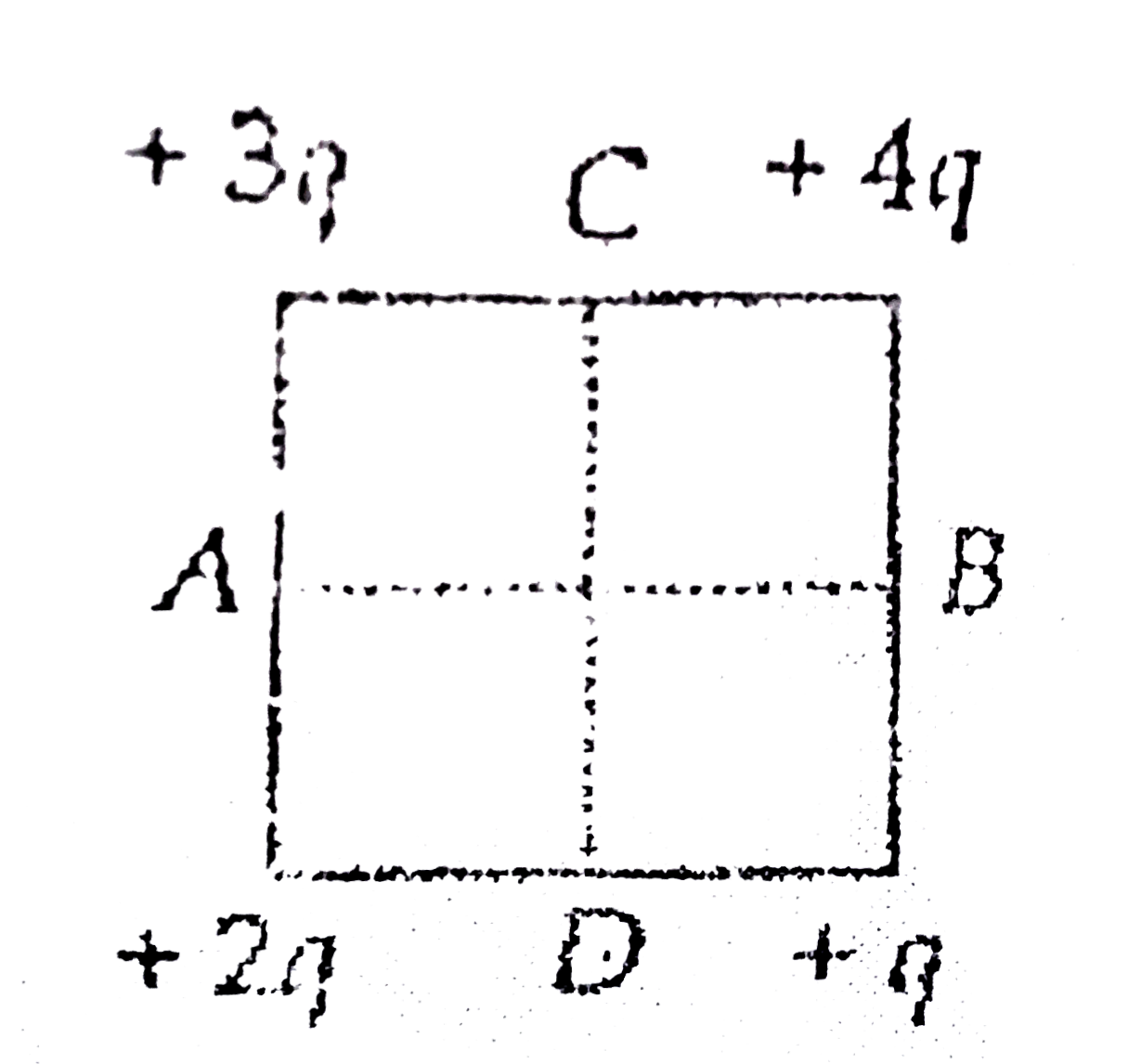
DC
BC
AB
AD
The correct Answer is:A
The resultant electric fields due to diagonally opposite charge will act as shown below.
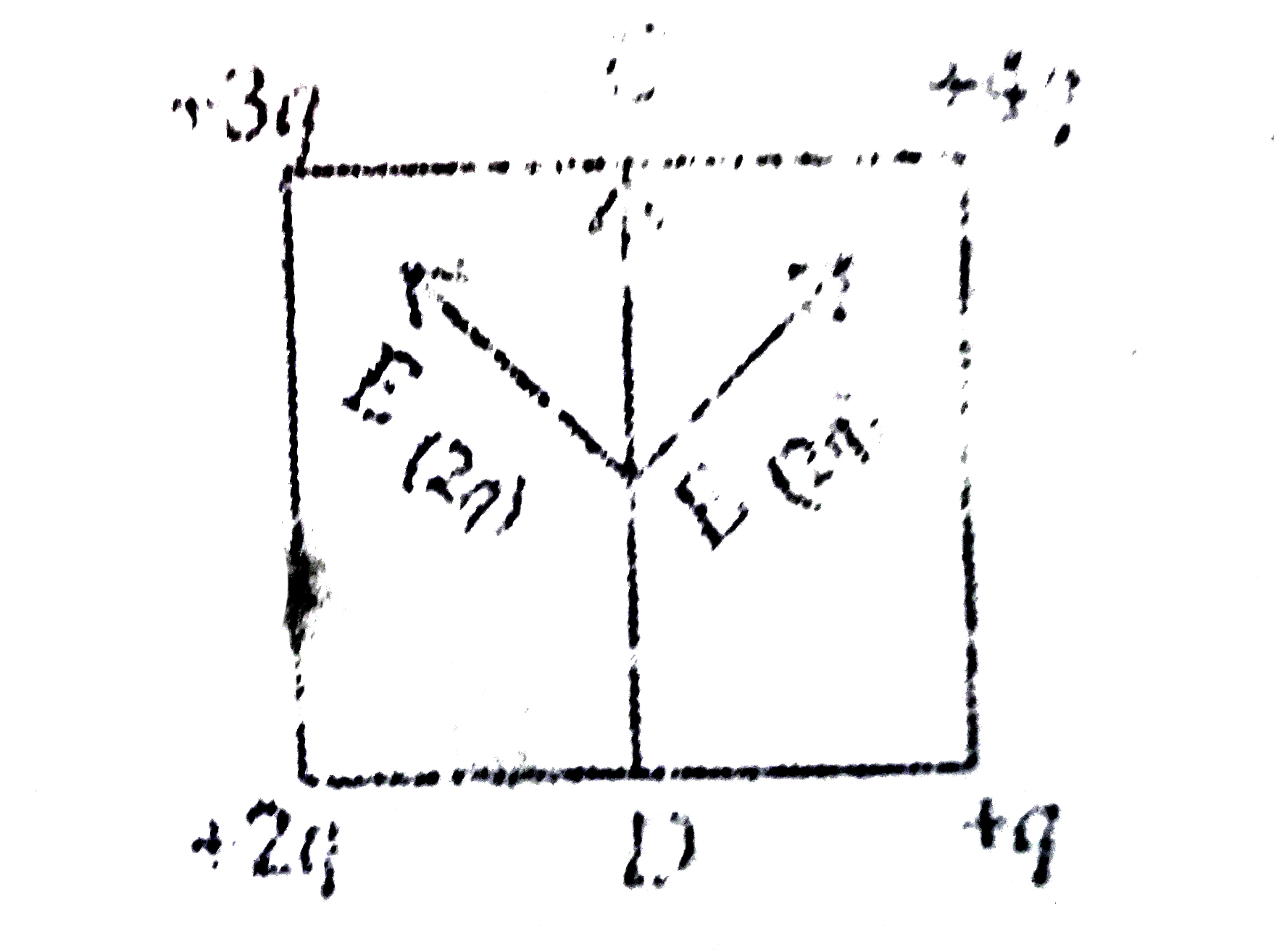
Hence the resultant field is along DC.
Topper's Solved these Questions
Similar Questions
Charges q,2q,3q and 4q are placed at the corners A,B,C and D of a square as shown in the following figure. The directon of electric field at the centre of the square is along
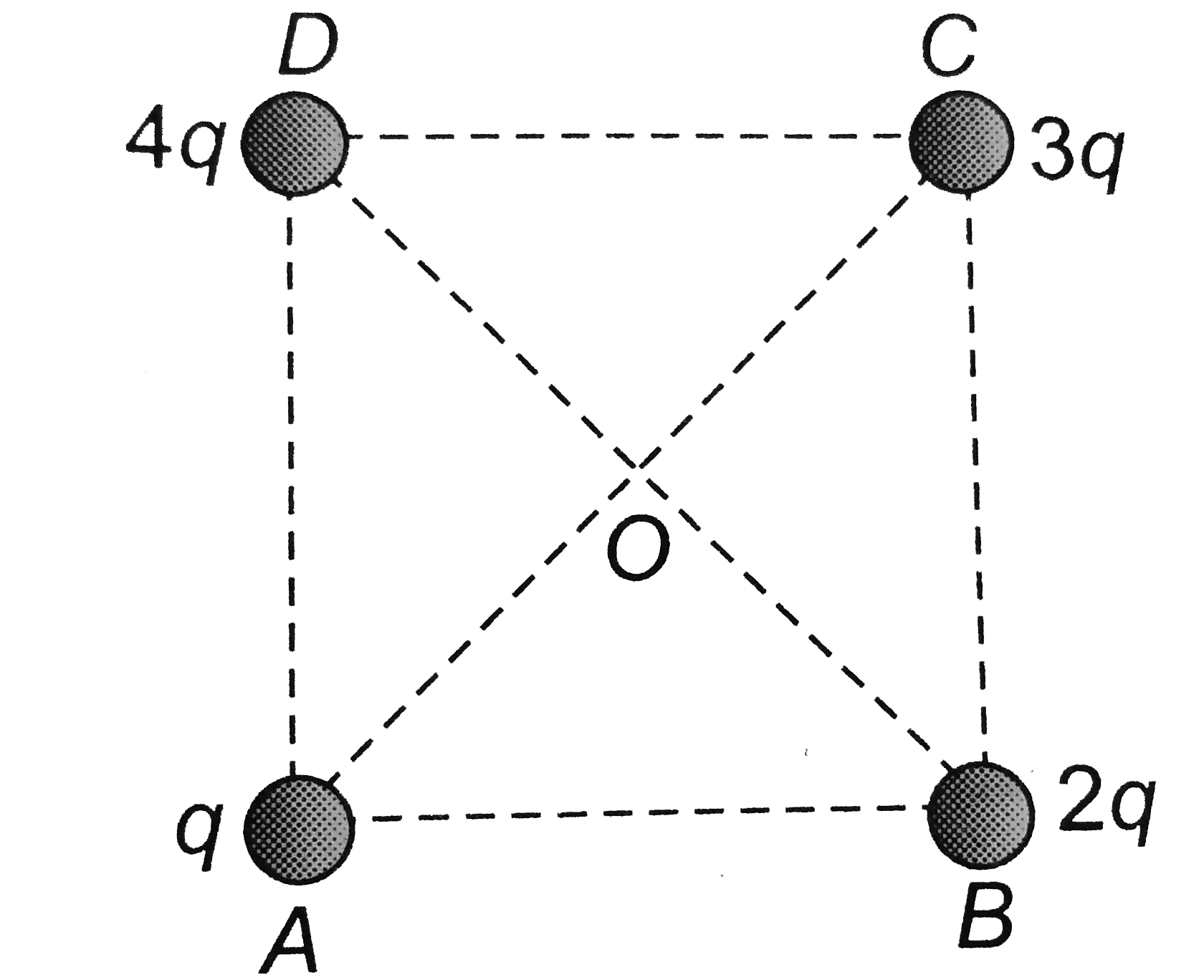
View SolutionFour charges are arranged at the corners of a square ABCD as shown in the figure. The force on the charge kept at the centre O will be:
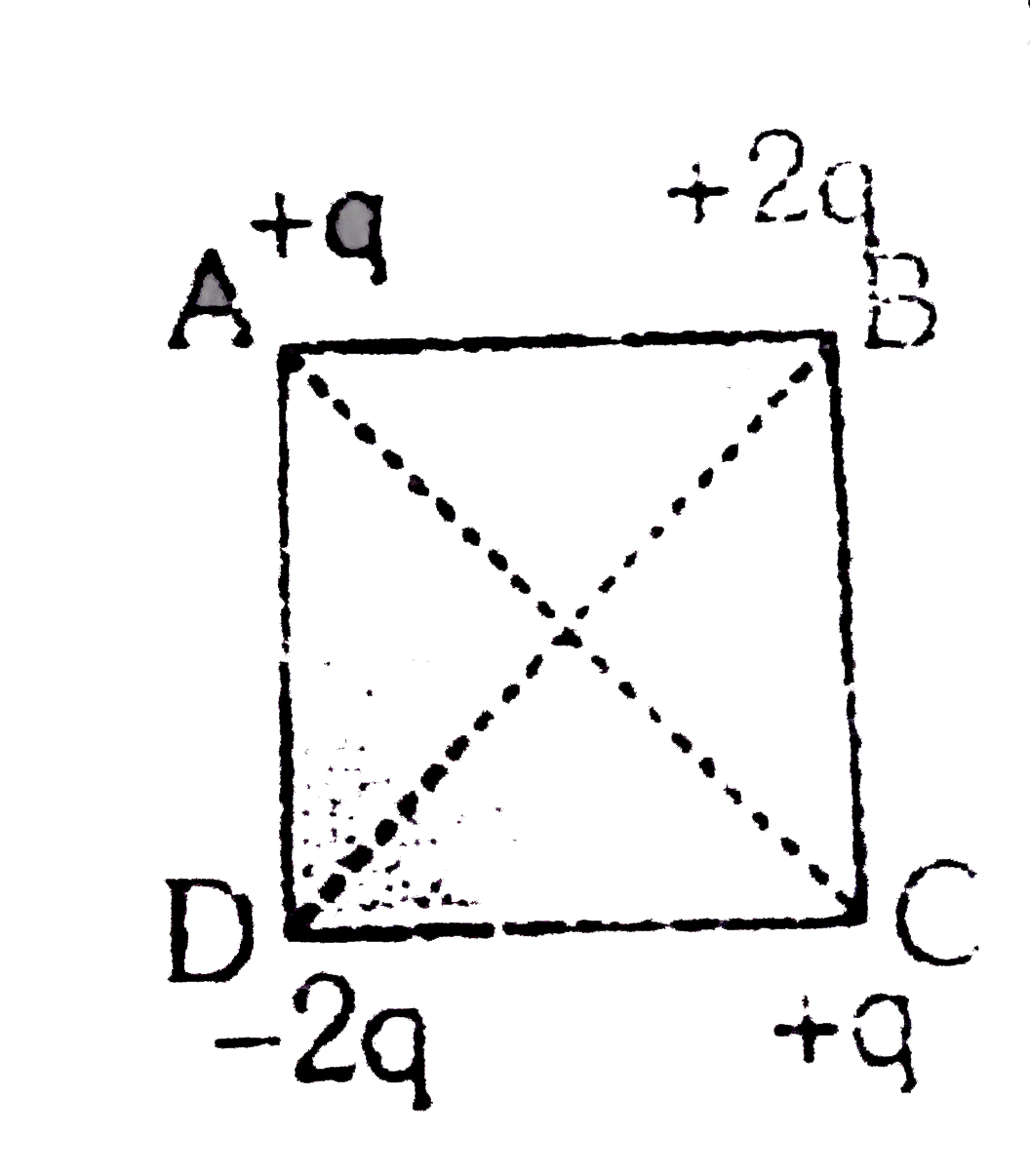
View Solution
Knowledge Check
Charges q,2q,3q and 4q are placed at the corners A,B,C and D of a square as shown in the following figure. The directon of electric field at the centre of the square is along
 AABBCBCBDDAC
AABBCBCBDDACFour charges are arranged at the corners of a square ABCD as shown in the figure. The force on the charge kept at the ccentre O is
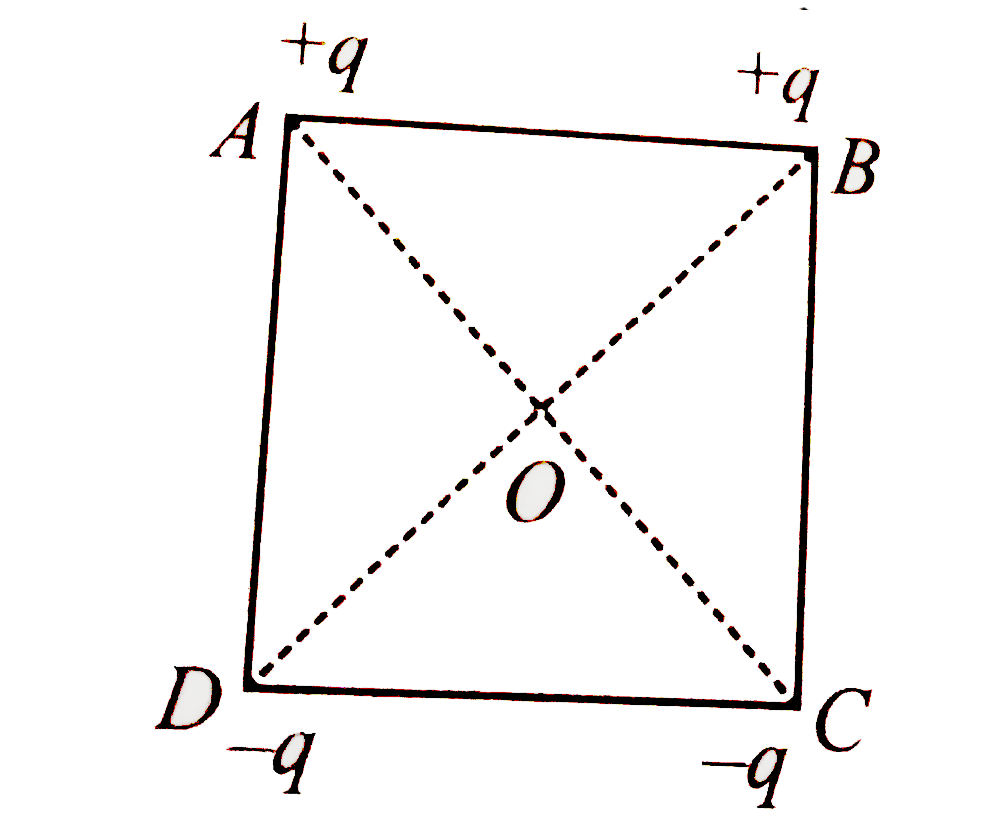 Aalong the diagonal BDBalong the diagonal ACCzeroDperpendicular to side AB
Aalong the diagonal BDBalong the diagonal ACCzeroDperpendicular to side ABFour charges are arranged at the corners of a square ABCD as shown in the figure. The force on the charge kept at the centre O will be:
 Aperpendicular to side ABBalong the diagonal BDCalong the diagonal ACDzero
Aperpendicular to side ABBalong the diagonal BDCalong the diagonal ACDzero
Four charges are arranged at the corners of a square ABCD, as shown. The force on a positive charge kept at the centre of the square is

View SolutionFour charges are arranged at the corners of a square ABCD, as shown. The force on a =ve charge kept at the centre of the square is -
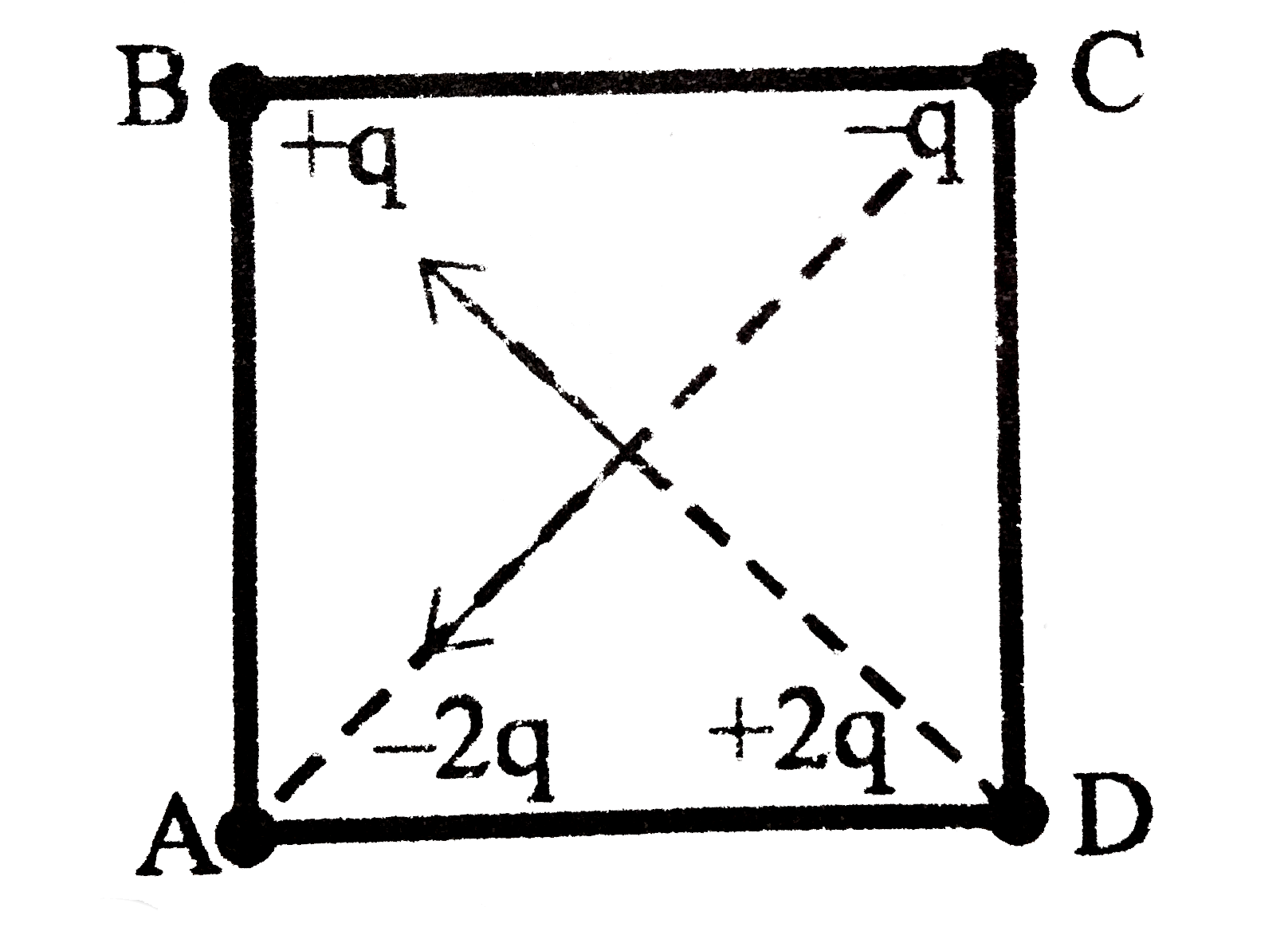
View SolutionFour point charge are placed at the corners of a square with diagonal 2a as shown. What is the total electric field at the center of the squre?

View SolutionFour charges are arranged at the corners of a square ABCD, as shown in the adjoining figure, The force on a positive charge kept at the centre O is
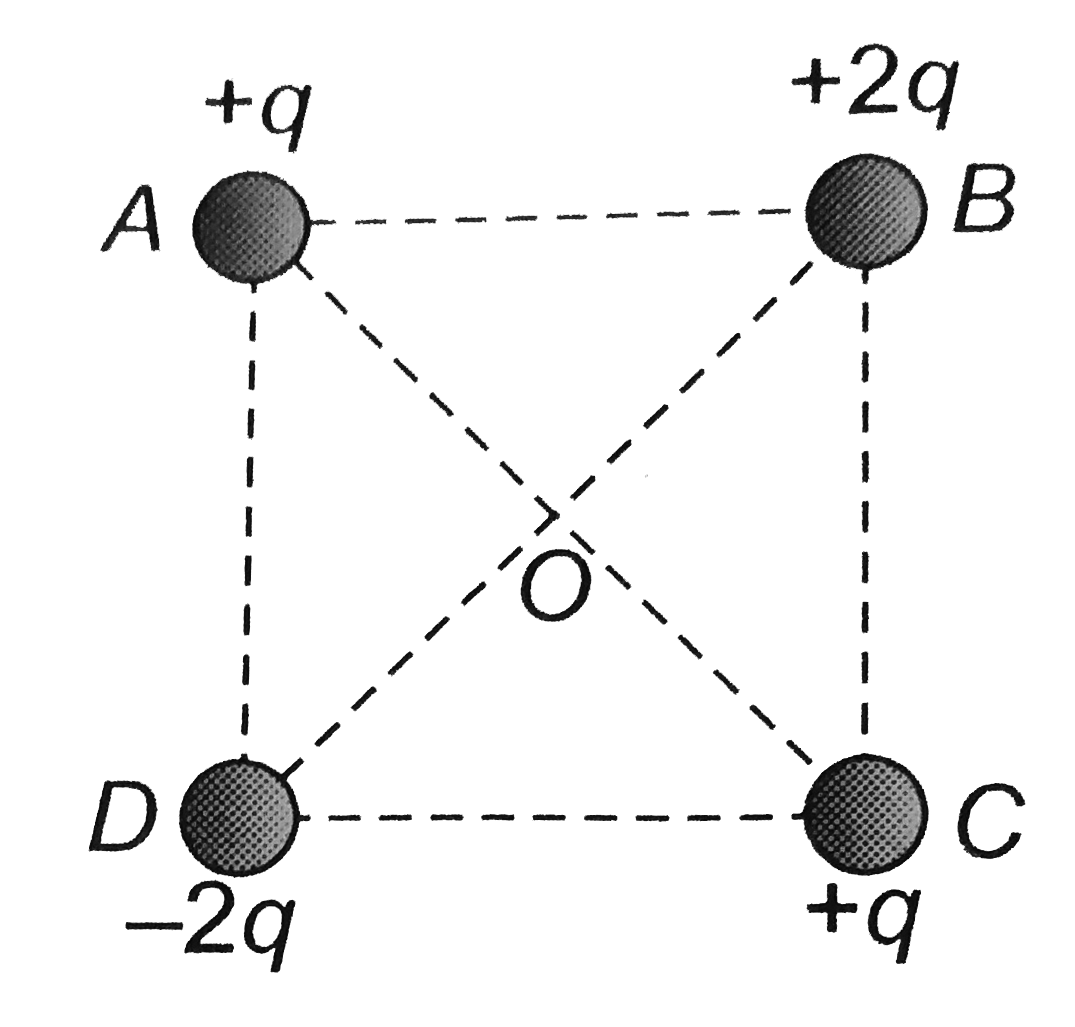
View SolutionFour electrical charge are arranged on the corners of a 10cm square as shown.
What would be the direction of the resulting electric field of the resulting electric field at the center point P?
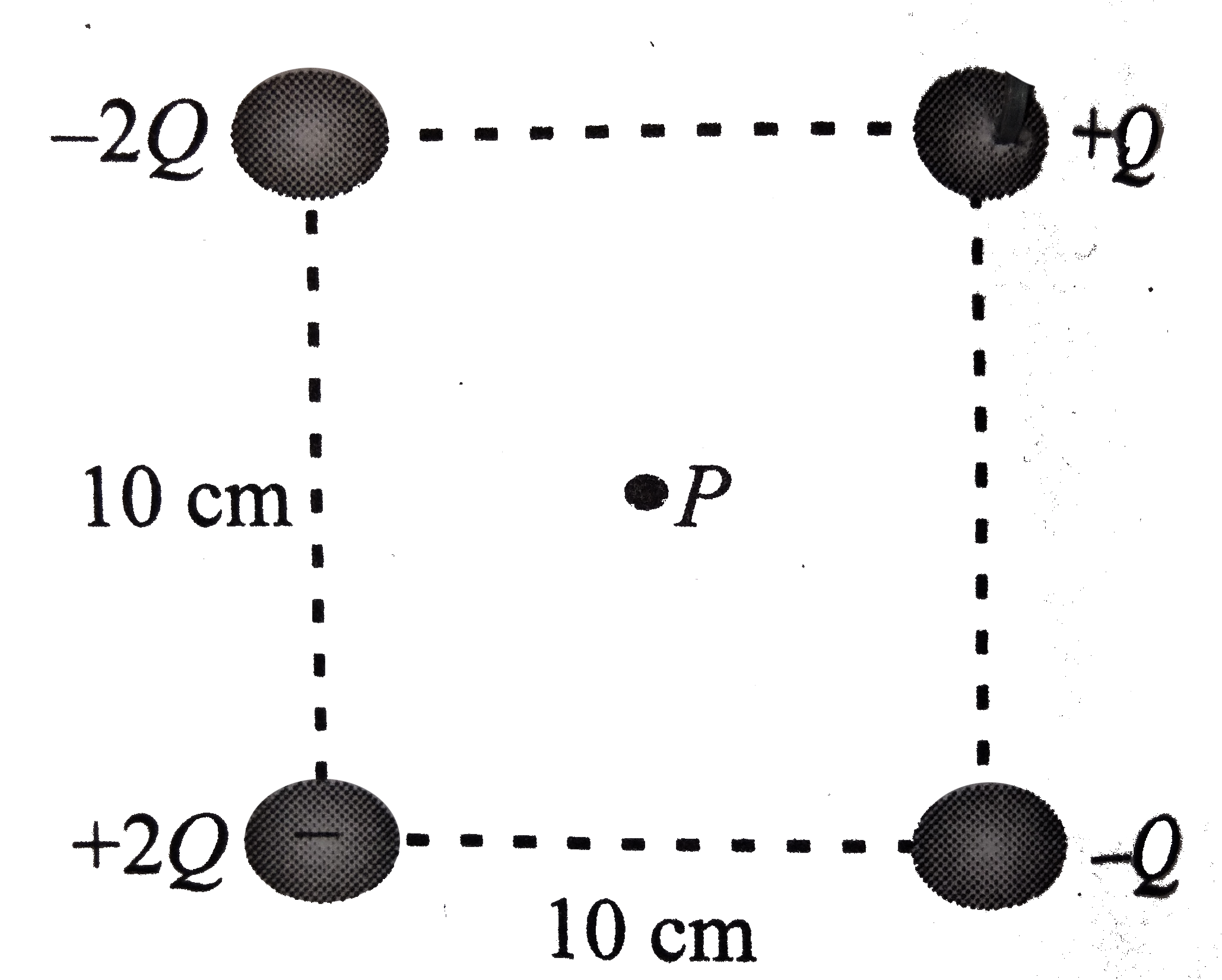
View Solution

